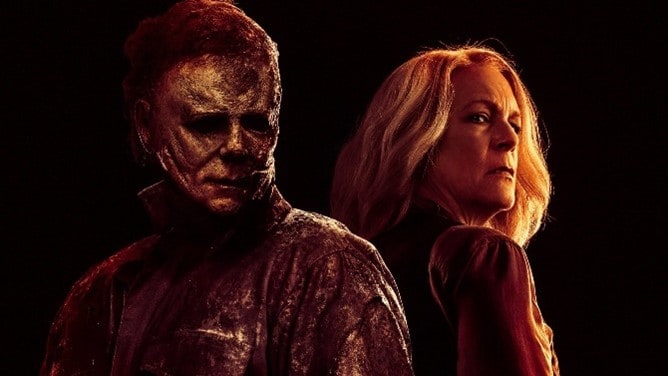By Andrew Jenck
Disclaimer: This review covers material and plot synopsis not referenced in the marketing prior to release, so anything discussed could be seen as a spoiler. No revelations or twists are revealed, but for anyone who wants to be fully surprised, may just want to read the introduction.
Halloween Ends had a difficult task: conclude Laurie Strode’s and Michael Myers’ story while continuing the 1978 original’s theme that evil can never be fully killed; it is continually present. What was advertised as a straightforward revenge story turns out to be more complex than anticipated with mixed results. Audiences expecting the quicker pace of the previous two films may be taken aback with this more psychological-focused film that focuses less on the boogeyman himself but his influence over the characters. Through its many faults, Halloween Ends is an ambitious entry in the franchise that warrants respect even as it trudges through writing issues and franchise mandates.
In the wrong hands, Michael can be a generic slasher villain with little personality. He’s evil incarnate with no understandable motivation, so the story and characters surrounding him should be more substantial. Although this reboot trilogy has its stumbles, its kept Myers straightforward while any substance comes from the characters surrounding him. Here, the town of Haddonfield is a character of itself, still reeling from trauma, blaming Laurie for provoking Michael, and disrupting the life a young man that the Strode’s take under their wing. Jamie Lee Curtis takes more of a supporting role, which works well for this story, as the audience understands the psychology of this new character. Certain elements of the series are inverted while still working within the story, making for some compelling ideas with mixed execution.
As with most scripts with four writers, the story can feel convoluted. A central theme is present, but the means of showing it can be awkward. Every character serves a purpose but often feel like their explaining the meaning to the audience. Particularly, one framing device where Laurie writes her memoir, has its moments but can feel too exposition heavy. Director David Gordon Green is maturing as a director and can demonstrate visual language, so such writing can feel superfluous.
Perhaps the greatest drawback of this Halloween Ends is being a Halloween film. Iconography from the 1978 film is repeated, feeling pointless as the tone and pacing is itself a homage to the classic. The apparent intent is to have Myers be heavily featured in Halloween Kills while this entry minimizes him, which is fine until the climax reverts to the status quo it tried to avoid beforehand. Such is the inherent risk of back-to-back sequels: the writers go into opposite extremes for both entries. The film feels confident in its decision, which is admirable, it just could’ve used some refinement.
Although it delivers mixed results, Halloween Ends is an admirable attempt to explore new territory in such a drawn out franchise that needn’t be one. Halloween (1978) still works better as a standalone film, but Green and his writers warrant respect for crafting new additions that feel their own while respecting John Carpenter and Debra Hills’ creations. The musical score best encapsulates the movie — understated but at times powerful and effective.


